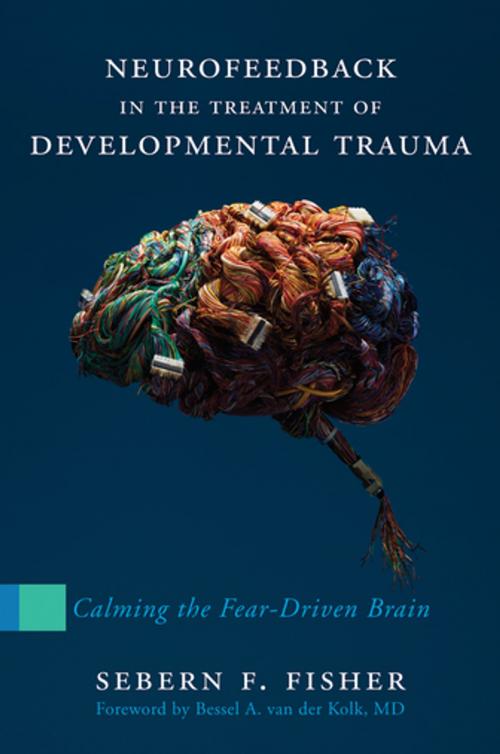Neurofeedback in the Treatment of Developmental Trauma: Calming the Fear-Driven Brain
Nonfiction, Health & Well Being, Psychology, Counselling| Author: | Sebern F. Fisher | ISBN: | 9780393709575 |
| Publisher: | W. W. Norton & Company | Publication: | April 21, 2014 |
| Imprint: | W. W. Norton & Company | Language: | English |
| Author: | Sebern F. Fisher |
| ISBN: | 9780393709575 |
| Publisher: | W. W. Norton & Company |
| Publication: | April 21, 2014 |
| Imprint: | W. W. Norton & Company |
| Language: | English |
Working with the circuitry of the brain to restore emotional health and well-being.
Neurofeedback, a type of "brain training" that allows us to see and change the patterns of our brain, has existed for over 40 years with applications as wide-ranging as the treatment of epilepsy, migraines, and chronic pain to performance enhancement in sports.
Today, leading brain researchers and clinicians, interested in what the brain can tell us about mental health and well being, are also taking notice. Indeed, the brain's circuitry—its very frequencies and rhythmic oscillations—reveals much about its role in our emotional stability and resilience. Neurofeedback allows clinicians to guide their, clients as they learn to transform brain-wave patterns, providing a new window into how we view and treat mental illness.
In this cutting-edge book, experienced clinician Sebern Fisher keenly demonstrates neurofeedback’s profound ability to help treat one of the most intractable mental health concerns of our time: severe childhood abuse, neglect, or abandonment, otherwise known as developmental trauma.
When an attachment rupture occurs between a child and her or his primary caregiver, a tangle of complicated symptoms can set in: severe emotional dysregulation, chronic dissociation, self-destructive behaviors, social isolation, rage, and fear. Until now, few reliable therapies existed to combat developmental trauma. But as the author so eloquently presents in this book, by focusing on a client's brain-wave patterns and "training" them to operate at different frequencies, the rhythms of the brain, body, and mind are normalized, attention stabilizes, fear subsides, and, with persistent, dedicated training, regulation sets in.
A mix of fundamental theory and nuts-and-bolts practice, the book delivers a carefully articulated and accessible look at the mind and brain in developmental trauma, what a “trauma identity” looks like, and how neurofeedback can be used to retrain the brain, thereby fostering a healthier, more stable state of mind. Essential clinical skills are also fully covered, including how to introduce the idea of neurofeedback to clients, how to combine it with traditional psychotherapy, and how to perform assessments.
In his foreword to the book, internationally recognized trauma expert Bessel van der Kolk, MD, praises Fisher as “an immensely experienced neurofeedback practitioner [and] the right person to teach us how to integrate it into clinical practice.” Filled with illuminating client stories, powerful clinical insights, and plenty of clinical "how to," she accomplishes just that, offering readers a compelling look at exactly how this innovative model can be used to engage the brain to find peace and to heal.
Working with the circuitry of the brain to restore emotional health and well-being.
Neurofeedback, a type of "brain training" that allows us to see and change the patterns of our brain, has existed for over 40 years with applications as wide-ranging as the treatment of epilepsy, migraines, and chronic pain to performance enhancement in sports.
Today, leading brain researchers and clinicians, interested in what the brain can tell us about mental health and well being, are also taking notice. Indeed, the brain's circuitry—its very frequencies and rhythmic oscillations—reveals much about its role in our emotional stability and resilience. Neurofeedback allows clinicians to guide their, clients as they learn to transform brain-wave patterns, providing a new window into how we view and treat mental illness.
In this cutting-edge book, experienced clinician Sebern Fisher keenly demonstrates neurofeedback’s profound ability to help treat one of the most intractable mental health concerns of our time: severe childhood abuse, neglect, or abandonment, otherwise known as developmental trauma.
When an attachment rupture occurs between a child and her or his primary caregiver, a tangle of complicated symptoms can set in: severe emotional dysregulation, chronic dissociation, self-destructive behaviors, social isolation, rage, and fear. Until now, few reliable therapies existed to combat developmental trauma. But as the author so eloquently presents in this book, by focusing on a client's brain-wave patterns and "training" them to operate at different frequencies, the rhythms of the brain, body, and mind are normalized, attention stabilizes, fear subsides, and, with persistent, dedicated training, regulation sets in.
A mix of fundamental theory and nuts-and-bolts practice, the book delivers a carefully articulated and accessible look at the mind and brain in developmental trauma, what a “trauma identity” looks like, and how neurofeedback can be used to retrain the brain, thereby fostering a healthier, more stable state of mind. Essential clinical skills are also fully covered, including how to introduce the idea of neurofeedback to clients, how to combine it with traditional psychotherapy, and how to perform assessments.
In his foreword to the book, internationally recognized trauma expert Bessel van der Kolk, MD, praises Fisher as “an immensely experienced neurofeedback practitioner [and] the right person to teach us how to integrate it into clinical practice.” Filled with illuminating client stories, powerful clinical insights, and plenty of clinical "how to," she accomplishes just that, offering readers a compelling look at exactly how this innovative model can be used to engage the brain to find peace and to heal.















